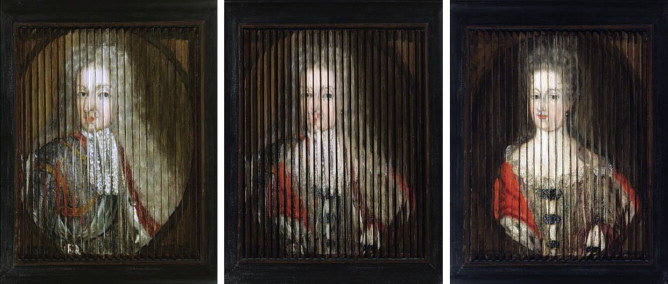

3D and Animated Lenticular photography:
what is a lenticular lens?
A lenticular lens is an array of magnifying lenses, designed so that when viewed from slightly different angles, different images are magnified. The most common example is the lenses used in lenticular printing, where the technology is used to give an illusion of depth, or to make images that appear to change or move as the image is viewed from different angles.
What is a lenticular print?:
Lenticular printing is a multi-step process which consists of creating a lenticular image from at least two images,and combining it with a lenticular lens. This process can be used to create various frames of animation (for a motion effect), offsetting the various layers at different increments (for a 3D effect), or simply to show a set of alternate images which may appear to transform into each other. From there the interlaced image can be printed directly to the back (smooth side) of the lens, or it can be printed to a substrate (ideally a synthetic paper) and laminated to the lens.
Lenticular printing is a multi-step process which consists of creating a lenticular image from at least two images,and combining it with a lenticular lens. This process can be used to create various frames of animation (for a motion effect), offsetting the various layers at different increments (for a 3D effect), or simply to show a set of alternate images which may appear to transform into each other. From there the interlaced image can be printed directly to the back (smooth side) of the lens, or it can be printed to a substrate (ideally a synthetic paper) and laminated to the lens.
Images that change when viewed from different angles predate the development of lenticular lenses.Extant double paintings, with two distinct images on a corrugated panel, are known from the 17th century. The name of the french artist that first used that technique was Gaspar de Bois Clair.
The principle of lenticular photography, through the use of lenticular lenses, first arose around nineteen hundreds as a novel way of presenting well known illusions such those of depth and animation.
The early lenticular process patented "barrier grid technique for animated autostereograms" created in the end of the eighteen hundreds
were improved by Maurice Bonnett in the 1930s with his reliepho-graphie technique and scanning cameras.

Gaspar Antoine de Bois-Clair, Double Portrait of King Frederick IV and Queen Louise
"Turning pictures" were probably known since the late 16th century
"Turning pictures" were probably known since the late 16th century
Mother Nature/Mother trash: modular lenticular image made with 2 interlaced images
Old stereogram (unknowed author and date)
